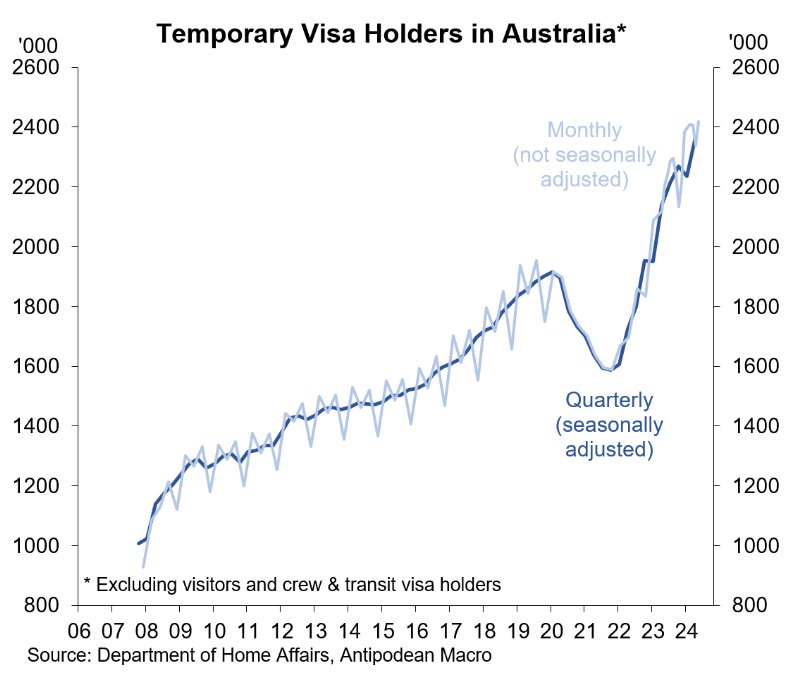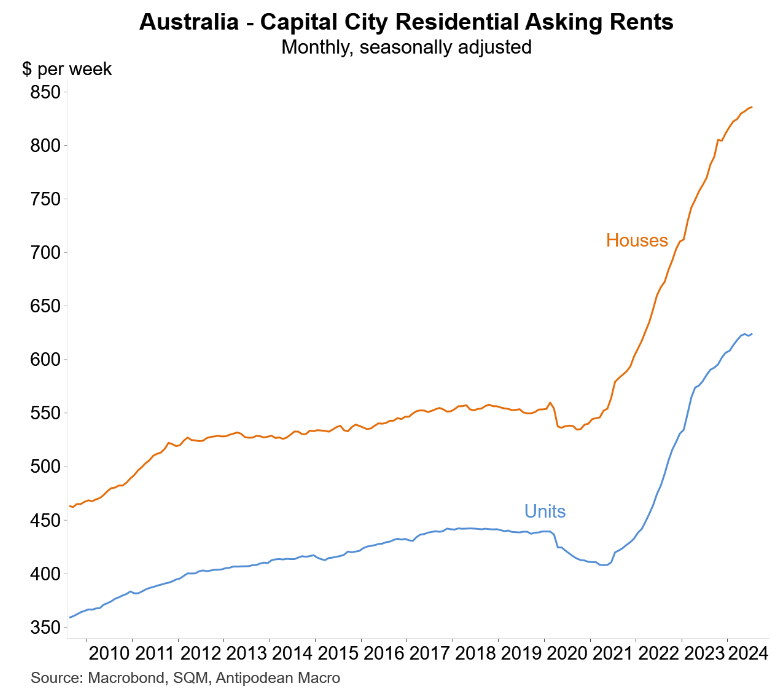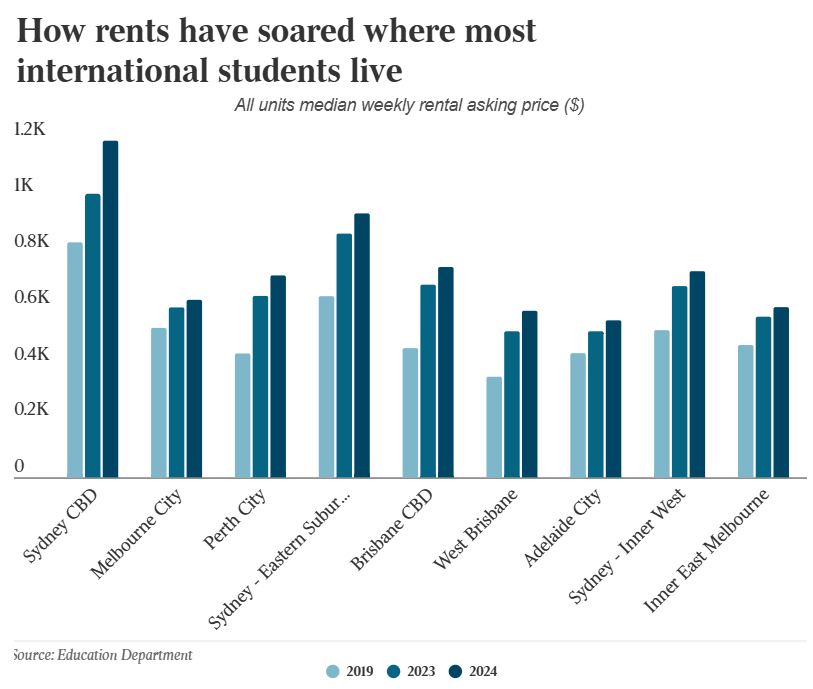Earlier this month, the chair of Australia’s National Housing Supply and Affordability Council, Susan Lloyd-Hurwitz, attacked the federal government’s international student caps and downplayed their impact on the rental market by citing spurious Student Accommodation Council (SAC) report.
Caps on international student numbers would likely have “very little effect” on housing supply, according to Ms Lloyd-Hurwitz.
“Because students are only 4% of renters”, she says.
“A number of them live in designated student housing or, indeed, rent those spare bedrooms from individual households”.
“But it would seem to be fairly damaging to our second-biggest export industry … It is not the case that international students are crowding out renters in our cities”.
“That’s just simply not true”.
Lloyd-Hurwitz’s argument always defied both evidence and common sense.
The link between increased international students and temporary migration with rents is clear.
The number of temporary visas in Australia has climbed by almost 500,000 from the pre-pandemic high, as indicated in the following chart from Justin Fabo of Antipodean Macro:

As a result, asking rents have also surged:

To nobody’s surprise but Susan Lloyd-Hurwitz’s, when you import an additional 500,000 people into Australia, they all need somewhere to live. Accordingly, rents surged and rental vacancy rates cratered.
Hilariously, a new fact sheet from the Department of Education has debunked the claim that international students utilise only 4% of Australia’s rental housing stock.
This 4% figure was based on 2021 Census data when international student enrolments were tracking at a cyclical low.
Using updated data and the same methodology as the SAC report suggests that international students utilise 7% of Australia’s rental accommodation, or one in every 14 rental homes:
“According to ABS 2021 Census data, on Census night there were 363,900 student visa holders in Australia”, the fact sheet notes.
“The Department of Home Affairs Number of temporary visa holders in Australia report (BP0019), 31 July 2024, shows 696,162 student visa holders in Australia. This represents a 91.3% increase in the number of student visa holders when compared to the 2021 census data from which the 4% figure was derived”.
“All other things being equal, this means that the 4% national average figure based on the census would be more like 7% based on 31 July 2024 figures”, the Department of Education estimates.
Moreover, the fact sheet notes that the 4% figure was a national average across all rental markets, and that the concentration is much higher in major capital city areas:

The Department of Education also explains how the surge in international students has likely driven up Australia’s rents:
“The Reserve Bank of Australia estimated that a 1% increase in dwelling stock results in the cost of rentals decreasing by 2.5%”.
“A 1% reduction in the demand for private rental properties has an equivalent impact as a 1% increase in dwelling stock and would result in a decrease of rental prices across the market, especially in inner-cities”.
Independent economist Tarric Brooker recently cited findings from the Australian Bureau of Statistics (ABS) Temporary visa holders in Australia survey, which revealed that international students significantly increase demand for rental housing:
Here are the unvarnished facts without additional commentary straight from the ABS figures:
- International students are much more likely to live alone than the average adult under 40 (7.2% vs 4.2%)
- 14,000 reside in a boarding school or other on campus accommodation
- 116,000 live in a detached house, 51,000 in townhouses and 173,000 in apartments
- 28% reside in group households as defined by two or more unrelated people living together, compared with 13% for the population aged 20 to 30.
- 25,000 live in homes with two or more spare bedrooms, 68,000 with one bedroom spare. 68,000 live in a home with no spare bedroom’s.
- 35,000 live in a home needing two or more extra bedrooms, 63,000 with one extra bedroom being required as defined by the ABS.
The above data categorically proves that the record surge in international students has been a key driver of the hyper-inflation of Australia’s rents.
Susan Lloyd-Hurwitz has a long and distinguished career working in the property sector, most recently as the CEO of Mirvac.
Perhaps Lloyd-Hurwitz should be reminded that she now works for Australian taxpayers, not the industry.
Spouting industry propaganda and misrepresenting the facts about student demand and the rental market is poor form and suggests industry capture.

